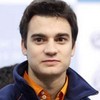
- HDTV en Europa, como están las cosas.
HDTV en Europa, como están las cosas.
-
asiduo

 HDTV en Europa, como están las cosas.
HDTV en Europa, como están las cosas.
Un artículo que parece bastante interesante.
Saludos.
http://www.videsignline.com/showArti...leId=163102011
-
Dani, no corres solo (26)



 Re: HDTV en Europa, como están las cosas.
Re: HDTV en Europa, como están las cosas.
alguien resume las conclusiones?
-
asiduo

 Re: HDTV en Europa, como están las cosas.
Re: HDTV en Europa, como están las cosas.
Esto es muy interesante:
THE BATTLE OF CODECS, RESOLUTION AND SCAN FORMATS IN EUROPE
When HDTV is discussed among various European experts, always the same key showstoppers for HDTV are mentioned: lack of bandwidth capacities, encoding inefficiencies, and set-top box pricing and availability.
However, to tackle these mentioned issues a harmonized approach is required for Europe. The starting point is the definition of a common resolution and scan format for the content.
1) 720p vs. 1080i In principle all specialists agree that progressively scanned content looks better18 than interlaced scanned content. Today, progressive scanning is only available for the picture resolution 1280 * 720 (=720p). The technical requirements for a full 1920 * 1080 picture in progressive scan (=1080p) are still too demanding in terms of scan/refresh rates and processing speeds.
Inside the European broadcast industry there are mainly two "camps". The 720p 'camp' argues that progressive is more efficient for compression, provides a better looking picture and is achievable with state-of-the-art technology. So why use an 'old-fashioned' data compression tool19 like interlace when one doesn't need to. Further, they argue that 720p is more than sufficient for big TV screens or projection systems in the home environment. On the other hand, the 1080i 'camp' is convinced that the industry should start with 1080i as the HDTV source standard, and as technology improves and the market grows, upgrade to 1080p.
The EBU committee chaired by Mike Croll of the BBC is working on a European position on an HDTV standard. Its decision to recommend the progressive standard 720p as a starting point was announced at IBC in September, 2004. But despite this initial recommendation the situation in Europe is not yet resolved. 2) MPEG2 vs. MPEG4 vs. WM9 Assuming that a common resolution and scan format is found for Europe, the next hurdle to be passed by the European broadcasters is the selection of a data compression codec.
Y esto también:
HDTV AND TERRESTRIAL DIGITAL TV
While the cable and satellite infrastructure in Europe is quite comparable to the implementations in the USA, the terrestrial transmission systems DVB-T (Europe) and ATSC (USA) are used in different ways.
The ATSC system supports a maximum data rate of approximately 19.4 Mbit/s in a 6MHz channel using the modulation system 8-VSB26 . The DVB-T system allows a flexible definition of the transported useful data rates in the range from 4.98 Mbit/s to 31.67 Mbit/s in an 8MHz channel. Due to the used modulation format COFDM27 , different transmission parameters (code rates, sub-carrier modulation and guard interval size) can be defined to allow different network structures and the support of different ways of reception.
While in the USA the transported content is usually owned by the network that runs the transmitter, in Europe several content providers share a DVB-T transmitter. Typically 4-5 SDTV programs are transmitted over one transmitter with a total useful bit rate around 20MBit/s. In addition, the DVB-T standard supports single frequency network operation (SFN operation28 ) which allows coverage over a wide area by several transmitters operated on the same frequency.
One of the current strategies of the DVB-T operators (e.g. in Germany) is to provide 'TV-everywhere'. The objective of 'TV-everywhere' is to target the availability of as many programs as possible for indoor portable reception. This approach is nicknamed 'cable in the air'. Taking into consideration this approach the first question to be asked is:
Si la ley de Murphy se cumple, en vez de tener HDTV en Europa tendremos más y más canales de televisión supercomprimidos con cincuentamil artefactos por centímetro cuadrado mientras se emiten anuncios, claro.
Una propuesta: dar caña desde este foro, de alguna manera, no sé... envío de correos a quien sea para presionar.
Saludos.
-
asiduo

 www.petitiononline.com
www.petitiononline.com
En petitiononline.com hay una formula para exigir de los gobiernos europeos que la HDTV se haga realidad.
Todo el mundo a firmar.
Saludos.
http://www.petitiononline.com/HDTVinEU/petition.html
-
Otaku

 Re: HDTV en Europa, como están las cosas.
Re: HDTV en Europa, como están las cosas.
El gobierno de Zapatero esta mas preocupado en devolver favores y dar la licencia a Canal Plus para emitir en abierto que en la alta definicion.
-
asiduo

-
principiante

 Re: HDTV en Europa, como están las cosas.
Re: HDTV en Europa, como están las cosas.

Iniciado por
cicos
El gobierno de Zapatero esta mas preocupado en devolver favores y dar la licencia a Canal Plus para emitir en abierto que en la alta definicion.
Los mensajes políticos sobran en foro de audio/video
-
aprendiz

 Re: HDTV en Europa, como están las cosas.
Re: HDTV en Europa, como están las cosas.
Aunque no sirva de mucho me sumo al deseo de que todos firmeis en el link para la implantación de la alta definición en europa....
Temas similares
-
Por perromedio en el foro Fuentes de audio (lectores CD, SACD...)
Respuestas: 13
Último mensaje: 08/11/2024, 13:35
-
Por bambolera en el foro TV: General y consejos de compra
Respuestas: 4
Último mensaje: 21/10/2009, 00:02
-
Por trillas en el foro Cableado A/V, conexiones A/V, mandos a distancia
Respuestas: 5
Último mensaje: 17/08/2007, 12:53
-
Por Shinji Mikami en el foro Tertulia
Respuestas: 8
Último mensaje: 14/12/2005, 18:02
-
Por thausus en el foro DVD (películas, series, documentales...)
Respuestas: 3
Último mensaje: 29/11/2004, 17:13
 Permisos de publicación
Permisos de publicación
- No puedes crear nuevos temas
- No puedes responder temas
- No puedes subir archivos adjuntos
- No puedes editar tus mensajes
-
Reglas del foro










Iniciado por cicos
